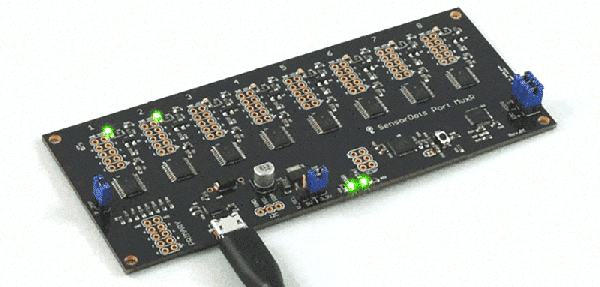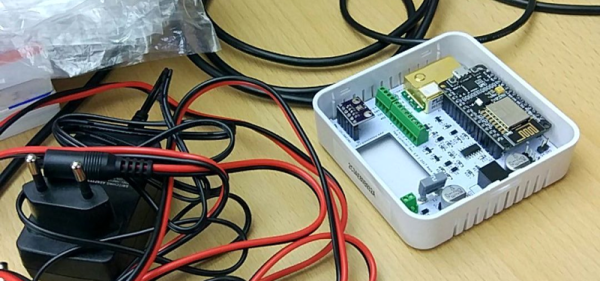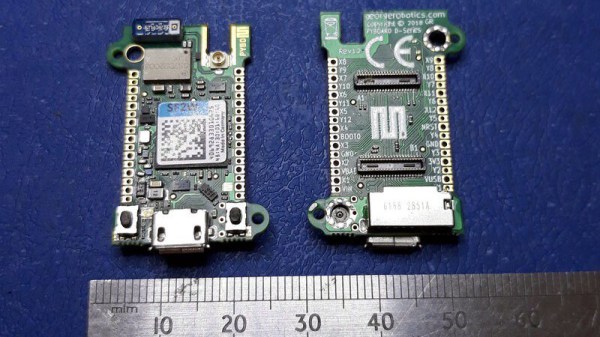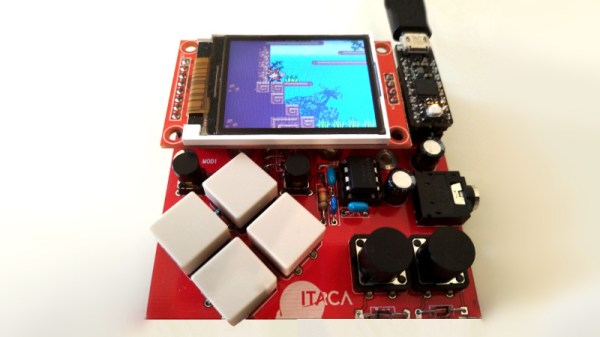What if there were something like a KVM switch for your micro programmer, logic analyzer, and other various tools? There was a time when KVM switches (keyboard, video, and mouse, by the way) were metal enclosures surrounding an absurdly complicated rotary switch. This fact has a few applications if you ever want to switch a whole lot of stuff; if you ever need a bazillion-pole, two-way rotary switch, don’t spend your money at Mouser or Digikey, just look at eBay for some really old KVM or parallel port switches. Modern times require modern solutions, so here’s a 16-channel, bi-directional switched bus multiplexer. It connects wires to other wires with USB control, and if you need something like this, you really need something like this.
The SensorDots Port MuxR is a crowdfunding project for a project that began as a programming jig for another project. The MappyDot is a micro LIDAR unit that’s about the size of a postage stamp and has a microcontroller. Obviously, programming those microcontrollers was a pain (and don’t get me started on buying pre-programmed microcontrollers from the manufacturer), but there was a solution: a custom programming rig with dozens of pogo pins that automated the programming of an entire panel of boards. It was a useful tool, and now it’s a good idea for a Kickstarter project.
The Port MuxR takes a set of eight pins, and sends that out to one of eight ports. Alternatively, it can take a set of four pins, and send that to sixteen ports. All of this is controlled via USB, and it works with 0-5V signaling. If you know what this means, you probably have a reason to be interested in it.
Is it a sexy project? No, not at all. It’s an 8-pole, 8-throw rotary switch, controllable over USB. It is interesting, and it’s something a lot of us are going to need eventually.

















